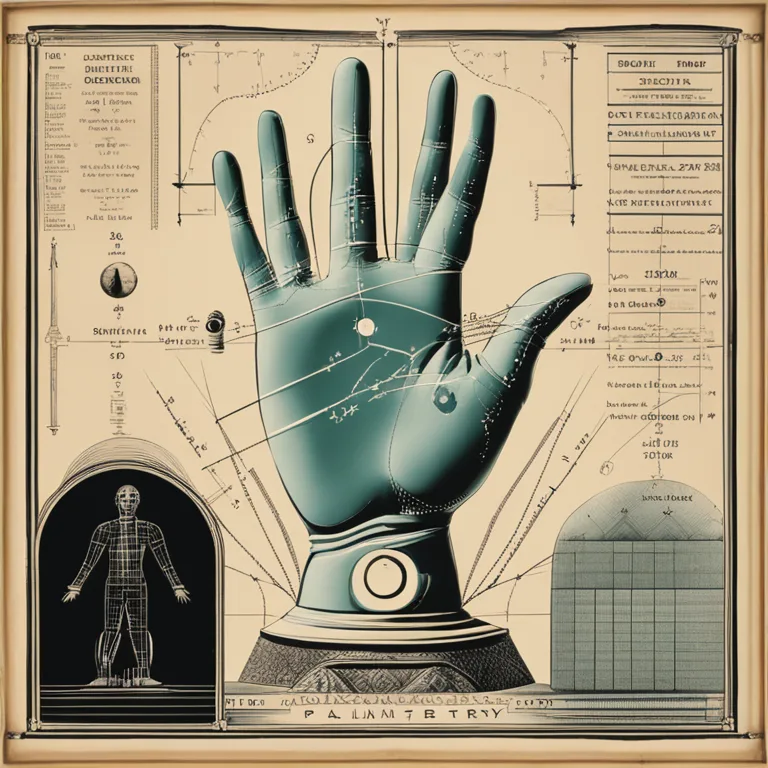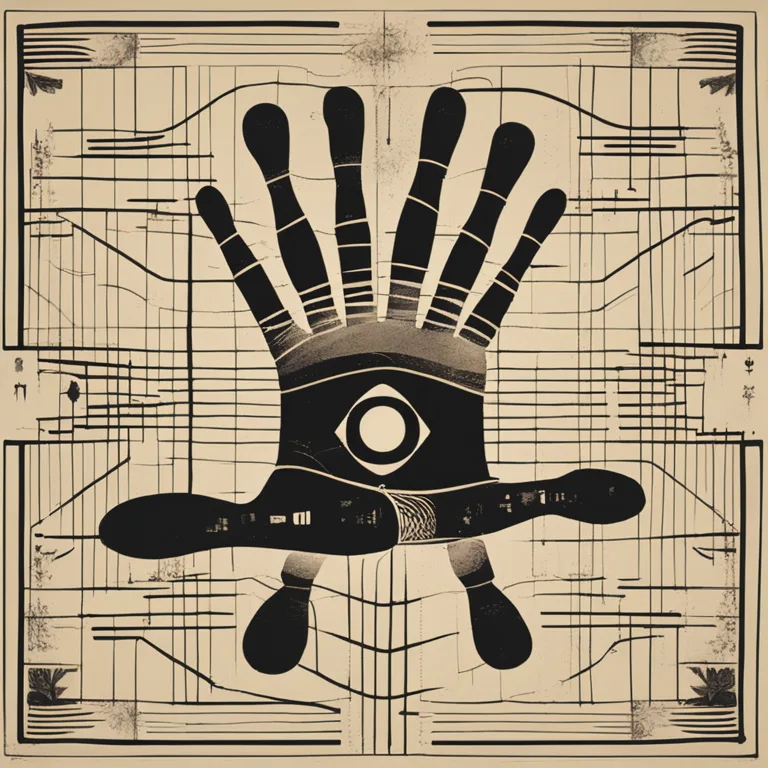
The Intersection Of Palmistry & Modern Science
Exploring the contentious relationship between the ancient practice of palmistry and contemporary scientific thought.
article by Nora Pennington
The Debate on Palmistry and Science
Palmistry, or chiromancy, is an ancient practice rooted in the belief that one's palms hold the keys to insights about their personality and life's path. With its origins shrouded in the mysticism of various cultures, palmistry has been a subject of fascination for millennia. On the other side of the spectrum stands science, a discipline that relies on empirical evidence and reproducibility to validate claims. The juxtaposition of palmistry's esoteric principles against the rigor of scientific methodology has sparked a longstanding debate. While palmistry enthusiasts highlight anecdotal successes, the scientific community generally regards palmistry as a pseudoscience due to a lack of empirical support and reproducible results.

Scientific Scrutiny of Palmistry
Since palmistry deals with assertions about an individual's future, character, and health based on palm lines, shapes, and sizes, it naturally invites scrutiny. Various studies have attempted to find scientific backing for palmistry's claims but have consistently run into challenges. The scientific method requires falsifiability, control groups, and statistical significance to affirm theories. To date, no substantial body of research has emerged that consistently links palm features with specific life outcomes or psychological traits under such stringent criteria. The lack of data-driven support plays a critical role in palmistry's exclusion from being recognized as a scientifically validated discipline.

Psychology and Palm Lines
Although mainstream science predominantly dismisses palmistry, the fields of psychology and neuroscience have tangentially brushed upon areas that echo palmistry's concepts. For instance, certain studies have linked the presence of specific lines or features in palms with specific medical conditions. The simian line, a single crease across the palm, has been variably associated with chromosomal disorders. Similarly, research on dermatoglyphics, the study of fingerprints and skin patterns, sometimes intersects with palmistry, as both involve an analysis of the hands. Nonetheless, such research is primarily medical in nature and does not lend direct support to palmistry's broader claims.

Cultural and Historical Perspectives
The practice of palmistry is deeply embedded in cultural traditions around the world. Historically, it has been used for guidance in personal matters and decision-making. Its place among various populations is more a testament to human nature's quest for understanding and predicting life's twists and turns than evidence of its empirical validity. From a sociological perspective, cultural studies that document the role of palmistry in society help to shed light on its significance across civilizations throughout history but do not aim to establish its scientific credibility.

Public Perception and Palmistry
The enduring appeal of palmistry is also reflective of its market demand within the realm of entertainment and personal insight. While skepticism remains prevalent among the scientifically literate, a segment of the population continues to seek out palmists for guidance. This personal choice often aligns more with many individuals' desire for narrative, pattern recognition, and meaning in life rather than the search for scientific proof. The tumultuous relationship between belief in palmistry and reliance on empirical science will likely continue as part of the wider discourse on science and spirituality.
The Way Forward
Moving into 2024 and beyond, the likelihood of palmistry being embraced by the scientific community remains slim. However, the fusion of technology and traditional practices opens up new avenues for exploration. With advancements in machine learning and data analysis, potential studies could provide novel insights into patterns that have previously been anecdotal. Should such technology-driven approaches yield replicable and empirically valid findings, the conversation between palmistry and science may evolve. Until then, palmistry remains a subject that fascinates and inspires, residing firmly outside the domain of mainstream science.
Published: 1/3/2024
Modified: 1/3/2024
More predictions
Come back here soon to learn more about yourself and your future


Accuracy in Divination: Palmistry vs. Astrology
Explore the relative accuracy of palmistry and astrology in predicting the future and revealing personal traits in this insightful comparison article.


Palm Lines and Love Connections
Delve into the fascinating world of palmistry and discover how your palms may hold the secrets to love and relationships.


The Origins & Journey of Palmistry
Trace the fascinating history of palmistry, understanding its ancient roots and its evolution through cultures and time.